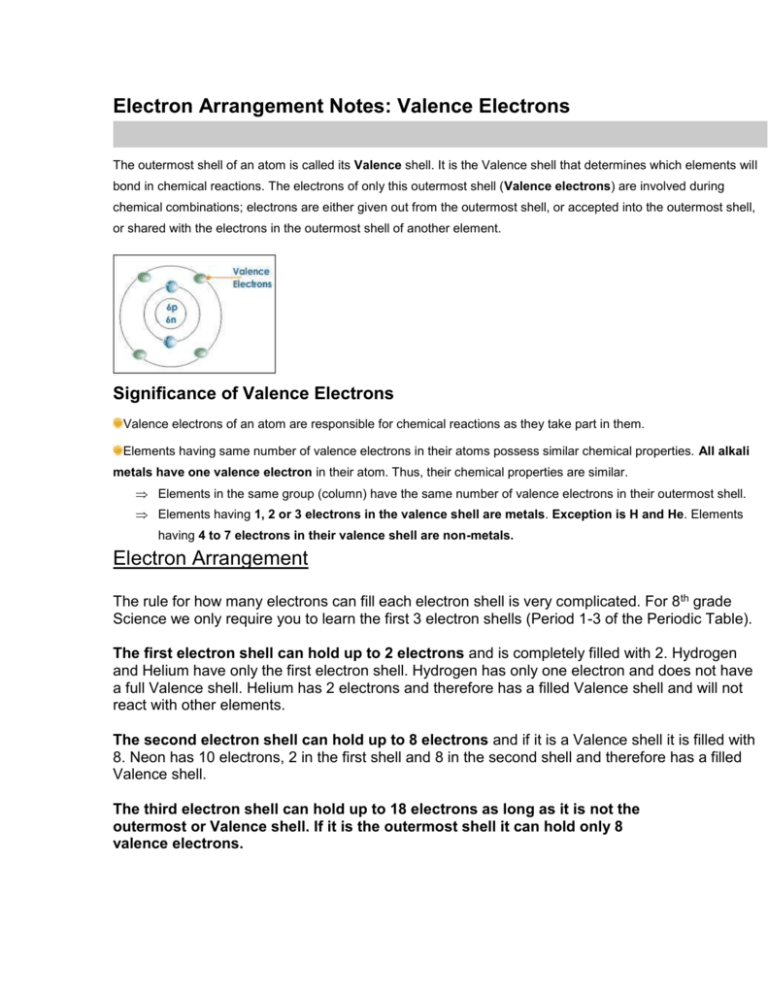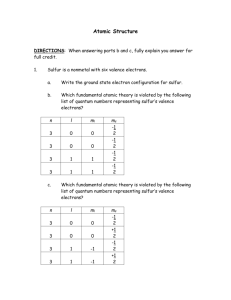Electron Arrangement Notes: Valence Electrons
advertisement

Electron Arrangement Notes: Valence Electrons The outermost shell of an atom is called its Valence shell. It is the Valence shell that determines which elements will bond in chemical reactions. The electrons of only this outermost shell (Valence electrons) are involved during chemical combinations; electrons are either given out from the outermost shell, or accepted into the outermost shell, or shared with the electrons in the outermost shell of another element. Significance of Valence Electrons Valence electrons of an atom are responsible for chemical reactions as they take part in them. Elements having same number of valence electrons in their atoms possess similar chemical properties. All alkali metals have one valence electron in their atom. Thus, their chemical properties are similar. Elements in the same group (column) have the same number of valence electrons in their outermost shell. Elements having 1, 2 or 3 electrons in the valence shell are metals. Exception is H and He. Elements having 4 to 7 electrons in their valence shell are non-metals. Electron Arrangement The rule for how many electrons can fill each electron shell is very complicated. For 8th grade Science we only require you to learn the first 3 electron shells (Period 1-3 of the Periodic Table). The first electron shell can hold up to 2 electrons and is completely filled with 2. Hydrogen and Helium have only the first electron shell. Hydrogen has only one electron and does not have a full Valence shell. Helium has 2 electrons and therefore has a filled Valence shell and will not react with other elements. The second electron shell can hold up to 8 electrons and if it is a Valence shell it is filled with 8. Neon has 10 electrons, 2 in the first shell and 8 in the second shell and therefore has a filled Valence shell. The third electron shell can hold up to 18 electrons as long as it is not the outermost or Valence shell. If it is the outermost shell it can hold only 8 valence electrons.





